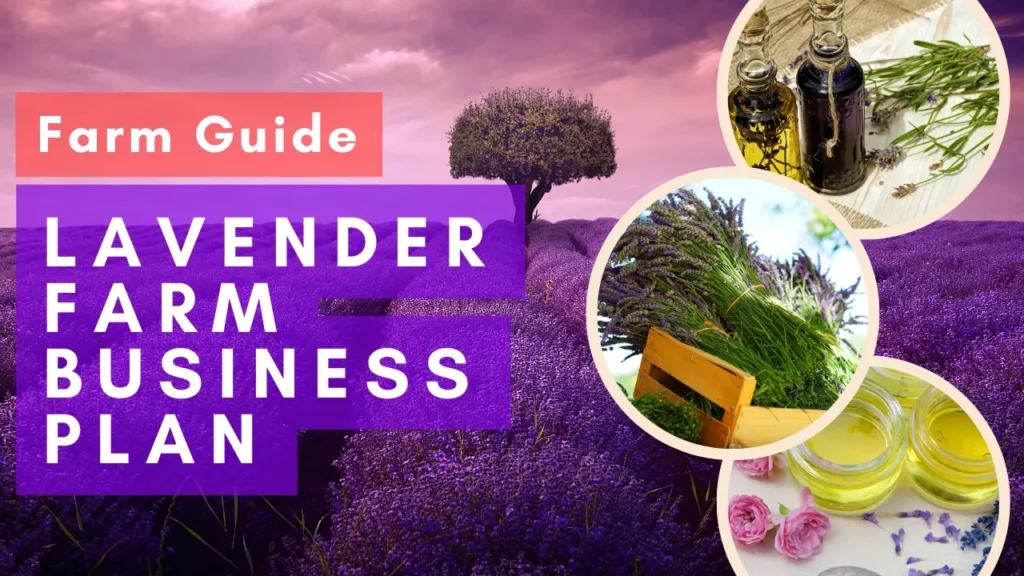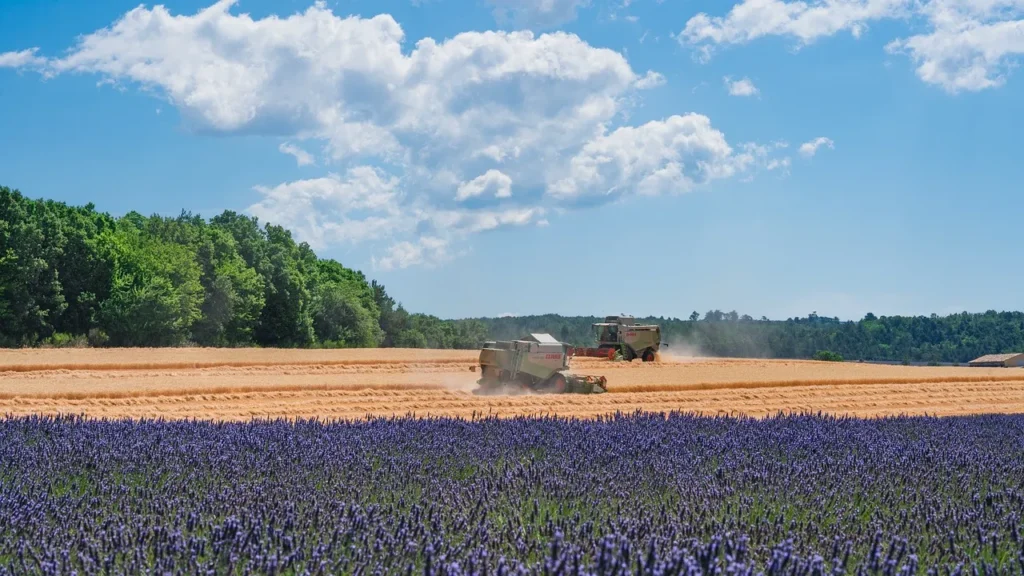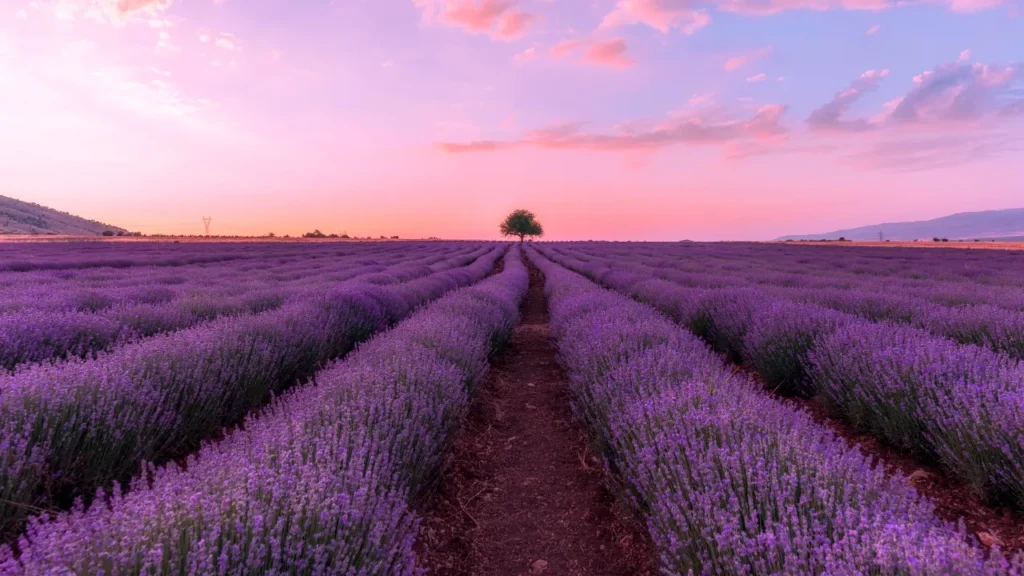Commercial lavender farming is growing and becoming more popular in the agricultural field. Also, it can be a part of the world’s agri industry.
The scientific name for lavender is Lavandula, with over 40 species, and it’s popular in the Mediterranean region and parts of Europe, though cultivated globally.
Farming lavender requires proper site selection, a favorable climate, the right selection of species, and prior farming knowledge.
If you want to start a lavender farm commercially, it can be a good idea; however, there are some things to remember. We’ve prepared an outline of the lavender farm business plan; let’s follow.
The blog post helps you to understand the basics and is useful for your farming project.
We’ll discuss the following:
- Outline of the business plan
- The process of starting a lavender farm
- Lavender products that you can sell
- Marketing and sales strategies
Understand the lavender farming
In lavender farming, some steps include site selection, cultivating, land preparation, planting, caring, and harvesting.
Lavender is used for many purposes: fragrance, oil, medicine, soap, etc.
When the flower is harvested and the oil extracted from it, the essential oils are used in aromatherapy, cosmetics, food flavoring, fragrance, herbs, and more.
Farming is a perfect way to bring beauty and relaxation into your stressful life, and you can also earn money by selling lavender-related products.
As another farming project, the general agricultural principles are applied in a lavender farm. Still, some specific requirements, such as climate, soil conditions, and harvesting techniques are different that you need to understand.
With research, hard work, dedication, and knowing the key principles of lavender farming, you can turn sunshine, soil, and water into your green gold and create a profitable business.

According to a research study report by (Zion Market Research), the global lavender oil market is growing on an upward trend with a CAGR of 5.0%, and the market size is forecasted to reach 1201 US million dollars at the end of 2030. Check the source link for more details.
The lavender plant is a popular and fragrant perennial with grey-green leaves, simple flower spikes, and a compact, bushy form.
It grows moderately, adding a few inches each year. With its sweet, earthy scent, lavender is widely used in herbal medicine and for many purposes.
Typically lavender requires 2-3 years to mature and be ready for harvesting, however, it depends from species to species.
Once planted, lavender can last up to 5-14 years. It is a hardy crop that you can grow on well-drained soil and requires minimal irrigation. Also, It can be planted with other crops.
Lavender farm business plan.

A well-researched and well-crafted business plan is helpful for a new venture to start.
Create a solid plan for your farming project that will help improve your work efficiency, provide a step-by-step roadmap, and be a part of becoming successful.
When writing, include some necessary points:
- Farming summary: Introduce your farm, mission, selling points, and the basic overview.
- Farming Description: Explain the method, process, requirements, harvesting, caring, etc.
- Market analysis: Research and add the demand, different products from lavender, target customer, region, etc.
- Lavender product: Write what you will offer (essential oils, soaps, culinary items, raw lavender, etc.).
- Marketing: Different marketing strategies and sales channels (farmers markets, online stores, partnerships, etc.).
- Other essential details: Financial planning, management, workforce, equipment or supplies, and legal requirements (if required).
Also, to farm lavender, you must include the essential farming process in your plan: (seed selection, land preparation, growing method, crop caring, harvesting, processing lavender crop, and producing final products to sell oil/dried flowers, etc.
When creating a plan, research your location, farming area, weather, geographical location, target market, demand, and competition.
Not only create a business plan but also implement a proper strategy. Farming and growing lavender are important, so focus on developing your farming skills.
How to start a lavender farm

Cultivating lavender is not a complicated process; the process is similar to other farming methods. However, some requirements, considerations, and precautions are different.
If you want to get started, there are so many steps we’ve outlined below, from researching the right species to marketing your product.
1. Select an ideal location for farming.
Then, the next step will be to select and prepare a good land for lavender farming; when you select land, make sure the location is (well-drained and solid, and sunlight will come to this land).
The most important step is identifying the right soil according to the species of soil selection.
The soil pH should be neutral and contain organic matter with a value of 7-8 (for better accuracy).
Before planting, you need to check the soil and the requirements for plant growth.
Suitable land selection for farming:
Here are some of the most important points you should consider when choosing land for farming: find loamy soil with good sunlight exposure; check out the given points.
- Well-draining and loamy soil
- Loam with low organic matter (2-5%)
- Full sunlight exposure
- Good air circulation should be
- Reliable water source
- Proper drainage system
- Proper soil preparation
- Test the soil pH (range 7.0-7.8)
- Favorable topography
- Accessible to market
how many acres are needed for a successful lavender farm
2. Preparing the soil for farming

Preparing the soil for lavender farming is crucial for successful cultivation.
Begin by clearing the land of weeds and rocks, followed by tilling to loosen the soil. Adding organic matter, such as compost or well-rotted manure, improves drainage and fertility.
Additionally, conducting a soil test helps determine pH levels and necessary amendments. Lastly, ensure proper irrigation and sunlight exposure for optimal lavender growth.
3. Climate and temperature requirements
Climate and temperature both play the main role in lavender cultivation.
The climate and season of farming can differ according to the country and state; you need to know the proper requirements (climate, temperature, soil) before starting.
To know the proper requirements of lavender farming, you can get advice from an expert person (in the local area).
The ideal temperature for lavender is (20°C to 30°C) with low humidity, and a temperature between (10°C to 35°C) is considered suitable, while some species need warmer climates.
Additionally, adequate sunlight, at least 6-8 hours of direct sun exposure per day, is crucial for growth and flower production.
According to the requirement, the spot should receive at least six hours of direct sunlight daily for good growth.
4. Lavender species selection

The important step for cultivating is to choose the suitable species according to your climate and growing conditions. Depending on the species, it depends from location to location, and some requirements will differ.
The most common species is (English, French, and Spanish lavender); each species has unique properties and farming requirements.
If you want to grow them according to your area’s growing condition.
There are various types of lavender species;
You need to choose a suitable one.
Every species has advantages and disadvantages, so make a clear plan and research thoroughly before selecting a suitable seed.
When choosing species for lavender:
- Consider your climate and growing zone.
- Determine the purpose of planting (fragrant flowers, herbs, oil production, etc.).
- Consider maintenance requirements
- Choose species suitable for well-drained soil and full sun
- Choose a size that fits your space.
Some popular species:
- English Lavender (Lavandula angustifolia)
- French Lavender (Lavandula stoechas)
- Hybrid Lavender (Lavandula x intermedia)
- Spanish Lavender (Lavandula dentata)
- Portuguese Lavender (Lavandula latifolia)
- Spike Lavender (Lavandula spica)
- Woolly Lavender (Lavandula Lanata)
5. Planting and growing lavender
Lavender planting involves a simple process and method.
- First, choose a sunny location with well-drained soil.
- Prepare the soil by removing weeds and adding organic matter.
- Dig holes and space the plants apart.
- Gently remove the lavender from its container and place it in the hole, covering the roots with soil.
- Water thoroughly and mulch around the plants to retain moisture.
- Regular pruning will encourage healthy growth and blooming.
Spacing in lavender farming depends on variety, ranging from 12-36 inches between plants and 3-4 feet between rows.
Caring for your plant:
Fertilization and irrigation are the most crucial for growing lavender; many diseases affect the plant; also, water and some vitamins are needed for good growth.
You can use natural pesticides such as garlic or pepper spray to protect your lavender plants from pets and disease.
Check your plants regularly for disease and remove the infected branches or leaves to prevent the spread of disease.
6. Harvesting lavender

When your lavender is mature and ready for harvesting, you can cut the flowers and sell them in different conditions (fresh flowers, drying them, selling, you can extract oil for selling), etc.
How:
- Clean cuts, 2″ above woody growth, entire stems.
- Bundle: As you harvest, tie loosely
- Don’t: Take more than 1/3 of the plant; harvest stressed/diseased plants.
Equipment you need for farming
Some essential equipment tools are required for farming, so you must buy or rent them. With the help of equipment, farming will be easy, and you can grow the plant well.
You can rent most farming equipment from rental stores or equipment dealerships. Renting can be a good option if you need the equipment for a limited time.
You can also rent specialized equipment that you may only need for a particular job or season. You can use those types of machinery on rent by paying a fee.
- Planting: shovel, hoe, rake, watering can
- Weeding: hoe, weeding knife
- Fertilizer: fertilizer spreader
- Irrigation: irrigation system
- Harvesting: sickle, shears, harvesting machine
- Drying: drying rack, dehydrator, commercial dryer
- Distillation: still
- Other: handcart or wheelbarrow, tarp or shade cloth, thermometer, sprayer
Lavender-based products you can sell
Those products are in our daily lives, and this type of product is made from lavender.
- Essential oils (For skin, Hair, and Herbs)
- Aromatherapy products (Candles, diffusers, room sprays, Air Fresheners, etc.)
- Personal care products (Soaps, Shampoos, Lotions, and Creams)
- Dried lavender (Sachets, Potpourri)
- Food and drink: Culinary lavender, tea, beverages
- Other products: Potpourri, laundry products, cleaning products
Marketing and sales strategies

To sell your lavender product in the market, you have to adopt an effective marketing strategy that can help reach the target audience of lavender lovers or users of a similar product type.
Marketing and promotion are the primary parts of business success and growth, so you need the right marketing strategy to create a good customer base for Lavender.
A good marketing plan captures the essence of this enchanting flower and showcases the benefits to potential customers. Utilize different marketing strategies to sell your products.
Focus your target market local, tourists, online shoppers, or specific businesses like florists and develop your marketing strategy accordingly.
There are various market channels you can follow, however some popular ideas:
- Farmer markets: Connect with customers directly to build relationships.
- Online marketplaces: Sell on your website and online, like Etsy and Amazon.
- Social media: Social media is a great way to promote and showcase your lavender with customers.
- Develop local partnerships: Collaborate with Florists, shops, restaurants, or event planners.
- Content market: Create blog posts, YouTube videos, Instagram reals, Share on Facebook groups, etc.
These are the simplest and best ways of marketing your lavender.
Where to sell lavender?
You can sell lavender in many places, according to demand in your area, such as local markets, retail stores, and specialty shops.
Also, other options exist to sell, such as online marketplaces (Amazon, Etsy, eBay), website creation, and wholesale distribution.
Farmers markets:
Selling your lavender in the farmers’ market is one of the best methods. You can provide high-quality, healthy, fresh products to customers.
Sell online:
Online marketplaces like Etsy, Amazon, or eBay are the best platforms for selling your lavender; you can reach a wider audience, and to sell them online, you don’t need to find any customers; the customer will find your products.
You can easily sell lavender-related products in bulk quantities to wholesalers or retailers.
Is lavender farming profitable?
Yes, farming lavender is profitable, but some factor depends.
Lavender farming has great potential for growth in the future, making it a profitable business opportunity. Modern farmers consider it one of the top five valuable crops in America.
Cultivation is easy and requires minimal maintenance, and cultivation does not require any fertilizers or chemicals (it still depends on the specific conditions of the farming process).
It becomes a suitable crop for farmers and gardeners; they can farm the flowering plant anywhere where proper sunlight, soil, climate, and drainage are available.
So, if you want to farm in your home garden, check the proper requirements, learn the process, and start.
Lavender requires minimal water and attracts beneficial insects such as bees and butterflies during flowering.
Starting a honey bee business alongside lavender farming is also a profitable option.
The popularity of lavender in the market is another profitability.
Fragrant crops, or fragrant plant production, are becoming increasingly popular in the country.
With the growing market demand and high profits, farmers adopted a new method and cultivated fragrant plants commercially.
Many benefits of lavender and its use in different forms:
- Calm fragrance, versatile use
- Natural, therapeutic properties
- Lavender can easily grow
- Popular in aromatherapy and beauty
- Used for relaxation and therapy
Lavender plants are found at a height of two to three feet. It is one of the well-known and useful species of flowering plants.
Apart from flowers, other species of lavender are grown for oil, perfume, herbs, medicine, etc.
Considering the product’s upside and downside is necessary before making a decision.
Pros and cons of farming lavender:
Pros
- More demand
- Low maintenance (some require pruning or pest control)
- Multi-use (essential oils, fragrances, personal care products)
- Attractive for tourism
- Long life span
- High-profit potential
- Sustainable crop
- It can be grown in small spaces.
- Aromatherapy benefits
- Requires good soil
Cons
- Climate sensitivity
- Pest and disease susceptibility
- Price volatility
- Seasonal harvesting
- High startup costs (farming equipment and machinery)
- Labor-intensive
- Market competition
- Time-consuming to process
How many acres are needed for a successful lavender farm?
Creating a successful farm depends on the area, and you can start farming on some acres/hectares. Generally, a small-scale farm can be as small as a quarter of an acre, while a larger-scale farm can be hundreds of acres.
You can start planting in the area you want; the farming scale can also depend on your budget and how much you want to invest in it.
Sure, here is a more detailed table that shows how many acres are needed for a successful lavender farm based on the intended yield, the variety of lavender grown, the profit potential, the production quantity, and the cost:
Here, we added a table showing how many acres a lavender farm needs based on intended yield, species, profit potential, production quantity, and cost.
Acres for lavender farm success: It’s Not a Numbers Game!
Focus on factors, not a magic number:
- Goals: Hobby, part-time (5-10 acres) income, or full-time business (10-50+ acres).
- Market: Direct sales or wholesale?
- Resources: Budget, time, skills?
- Other factors: Yield, costs, prices
Start small, expand gradually, and:
- Diversify crops/income streams.
- Connect with other lavender growers.
- Be realistic, plan well, and research thoroughly!
How much does it cost to start a lavender farm?
The startup cost depends on your planning, budget, how much land, workforce, machinery rent/buy, equipment, fertilizer, species, etc.
The cost is around $20,000 to $50,000 to start, but this is not the actual cost; you must research and analyze all factors and decide properly.
Also, if anyone wants to start with a small budget investing around ($2,000-$5,000), they need to understand the specific farming requirements to reduce expenses.
Other expenses: Permits, licenses, legal fees, packaging, and transportation.
The most important factor is how much area you plan to plant lavender in.
| Category | Item | Cost |
|---|---|---|
| Land | Purchase or lease | $5,000-$100,000+ |
| Irrigation | System | $1,000-$5,000 |
| Fencing | Materials and installation | $1,000-$5,000 |
| Plants | Purchase | $1,000-$5,000 |
| Tools | Hoes, shovels, watering cans, etc. | $500-$1,000 |
| Fertilizer | Annual cost | $500-$1,000 |
| Pesticides | Annual cost | $200-$500 |
| Insurance | Annual cost | $1,000-$2,000 |
| Marketing | Website, social media, advertising, etc. | $1,000-$5,000 |
| Labor | Hiring help to plant, harvest, and market your lavender | $5,000-$10,000+ |
| Total | $20,000-$50,000+ |
Lavender profit per acre

Many people are eager to do lavender farming and want to know how much profit is made by planting them per acre, but the answer depends on many factors.
The potential profit of lavender (per acer) depends on yield, selling price (dried lavender is $5-10 per pound, while the essential oil is $20-50 per pound), location, market demand, product forms (fresh cut flower, dried flower, essential oil, soaps, and lotion), and the production cost (land, plans, labor, equipment, and your efforts).
Potential lavender profit per acre:
- Low: $10,000
- Average: $20,000
- High: $40,000 or more
However, reality depends on:
- Yield: (Variety, conditions, practices)
- Selling price: (form, market)
- Production costs: (land, plants, labor, etc.)
You may also like – read the blog posts:
Frequently Asked Questions
Who buys lavender in bulk?
Yep, bulk lavender buyers are – individual businesses, florists, crafters, cosmetics companies, food and beverage companies, aromatherapy therapists, and herbalists.
How to become a lavender farmer?
To become a successful farmer, you must have the right knowledge of farming, planting, land preparation, caring, harvesting, etc. Gather all essential information and resources, and then start your farming project.
How much is a lavender farm business budget?
The arms business budget may need around $10,000-$50,000, including land, equipment, supplies, and marketing; still, the cost depends on the size of the project, land, geographic location, cost for farming, lavender species, and many other factors.
Lavender farm business plan profit?
Lavender farm profit is highly variable, with potential for good margins, but it depends on size, products, efficiency, and market research.
How many lavender plants per acre?
Farmers can cultivate 2,500-5,000 plants per acre, depending on spacing and requirements for different species and conditions.





